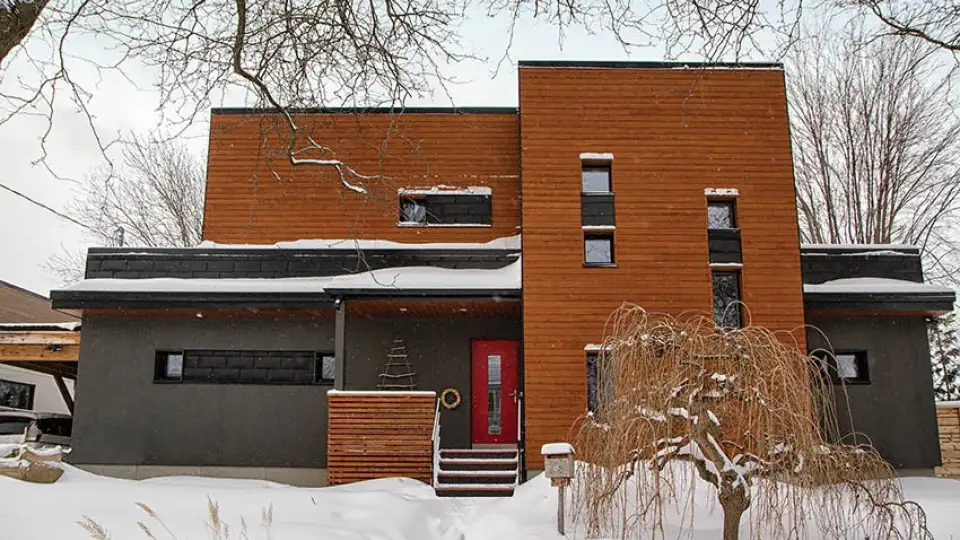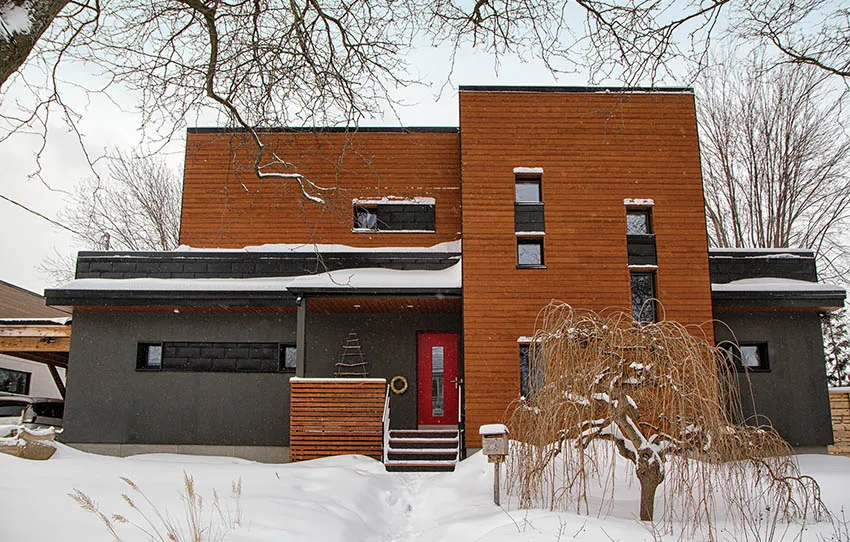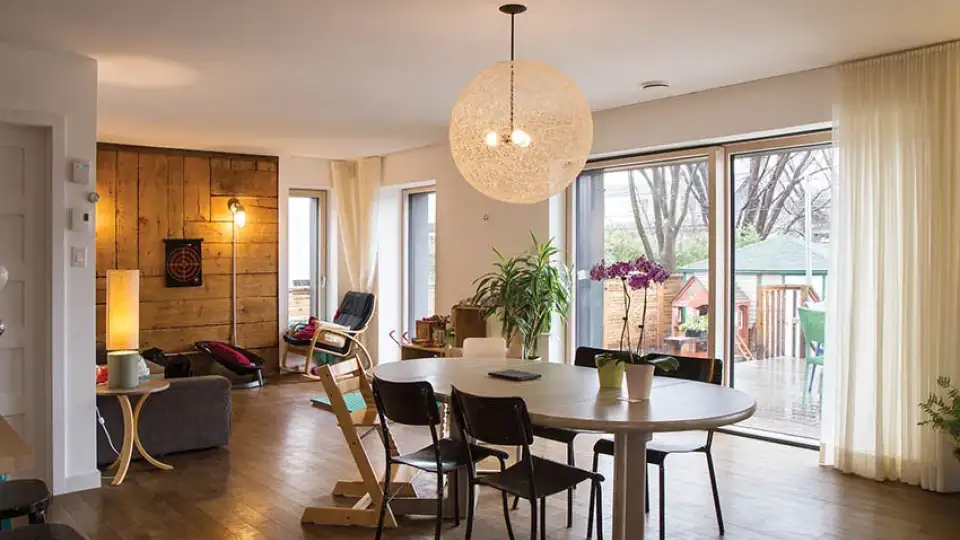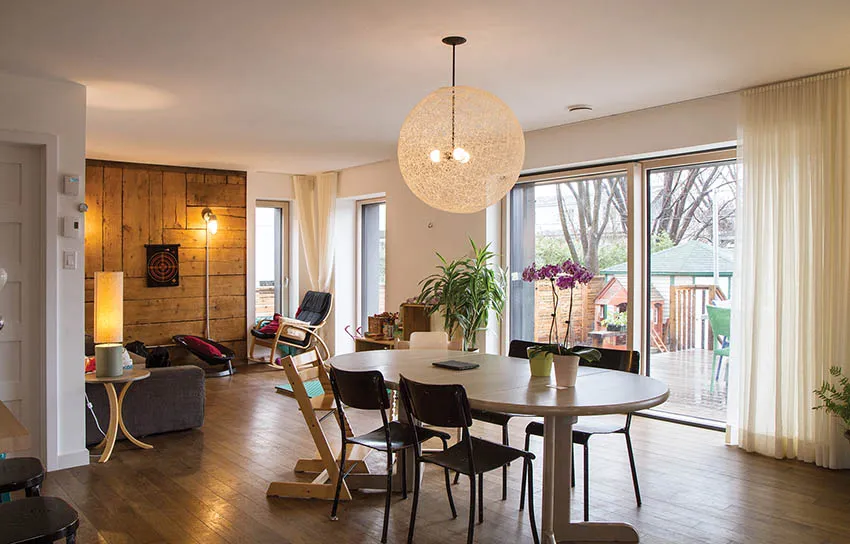



Metrics
|
Heating demand |
Cooling and dehumidification demand |
Primary energy demand |
Air leakage |
|
14.5 kWh/m²a |
0 kWh/m²a |
90 kWh/m²a |
0.38 ACH₅₀ |
Montréal, Quebec
In this modern house on a quiet street in Montréal, the red front door beckons. Stepping inside, light from the large, south-southwest-facing windows draws visitors into the combined living and dining room with its expansive view of the cultivated backyard.
This renovated four-bedroom house was the first certified Passive House in Quebec.
Designed by Lucie Langlois, principal of Alias Architecture, this 264-m2 house is a classic Passive House in every sense of the word. Thanks to superinsulation and an airtight shell—with a final blower door reading of 0.38 ACH50—the house needs very little supplemental heat to keep it warm through wintertime temperatures that average –9°C. The heating system is simple: A geothermal loop wound around the footings prewarms the intake air going to the ERV; when needed, a post heater in-line with the ERV further boosts the temperature of the air supplied continuously to the whole house. As a backup, several small radiant heaters are placed strategically around the house, but are rarely used.
This heating system operates almost automatically, but designing in this level of simplicity was not easy, especially in 2014, when the project first started, says Langlois. Product availability was a big hurdle, particularly when it came to windows. There weren’t any with the right performance specifications to meet the Passive House standard’s comfort criterion of no temperature differences greater than 4°C anywhere in the house. To compensate, ERV supply ducts are positioned beside the windows.
Meeting the primary energy target was also a huge hurdle, as at that time electricity—even that generated by hydropower—was slapped with a large source energy penalty; this calculation has now changed with the introduction of the primary energy renewable factors. This home is all-electric, like most homes in Quebec. An electric water heater provides hot water, aided by a greywater heat recovery system that conserves heat from the showers and laundry. The owners are big fans of their induction cooktop, as they are of almost every feature in their home, which they show off regularly during tours.
The home’s summertime comfort is the one aspect that has needed improvement. Planned exterior shading over the large south-facing glass door and windows was not installed. When temperatures stayed abnormally hot for a solid week, not even cooling off much at night, the owners installed a small air conditioner in the mud room, and the ERV distributes that cooling throughout the house.
Langlois, who is currently designing another two-story Passive House, says much has changed for the better since this first project. More Passive House-quality products are available, including heat pump water heaters, windows, and ventilation systems. As Langlois says now, “We find solutions more easily.”
Photos by Andre Bazinet
